Archaeologists Excavate Ancient Phoenician Port City
Source -http://popular-archaeology.com/issue/march-2012/article/archaeologists-excavate-ancient-phoenician-port-city
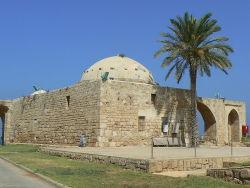
View of standing architecture at Achziv. Wikimedia Commons
The ruins of the site rest atop a sandstone hill, hugging the far northern coast of the current State of Israel near the border with Lebanon. One can see later-period standing structures that provide the backdrop for what is now a national park and beach resort. But below the surface, and beneath the ocean waves, lie the remains of an ancient harbor town that reach back in history to as long ago as Chalcolithic times (4500 - 3200 BC). After decades, a team of archaeologists will return to the site to investigate evidence of a settlement that played a chief role in the ancient commerce of the area and the civilizations that crossed and controlled its strategic location.
Known today as Tel Achziv, its remnants have been explored and excavated before, by Moshe Prausnitz from 1963 through 1964 and, in the vicinity of the site, by E. Ben-Dor, M. Prausnitz and E. Mazar, who uncovered large-scale Phoenician cemeteries. Anciently, it was a fortified Canaanite harbor city protected by a massive rampart, rising to prominence as a major Phoenician port for maritime commerce, connected to a coastal road for trade. The city flourished under the Phoenicians during the ninth century, was conquered by King Sennacherib of Assyria at the end of the eighth century, and continued to function as an important port city during the Hellenistic and Roman periods. The city was mentioned in the writings of Josephus Flavius, who referred to it as the place where Herod's brother was captured, and was also referrenced by Plinius (23-79AD) and appears in the Claudius Ptolemy World map (~150AD). It functioned later as an administrative center during Crusader times.
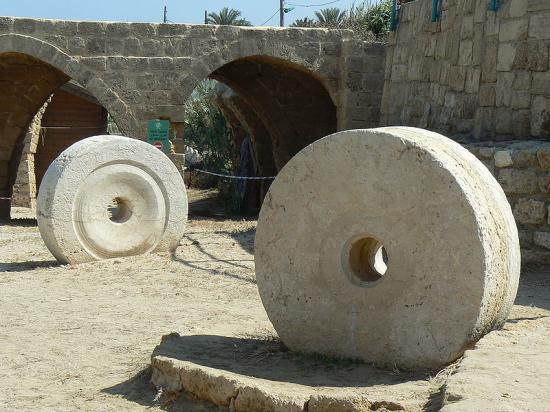
Ancient grinding stones at Achziv National Park. Wikimedia Commons
Now, a team of archaeologists, students and volunteers under the directorship of Dr. Gwyn Davies of Florida International University and Dr. Assaf Yasur-Landau of the University of Haifa will return to the site for inaugural excavations of unexplored remains, hoping to shed new light on an ancient city that in recent years has taken a back seat in the media to other coastal archaeological sites of the area. The evidence indicates a site of enormous additional archaeological potential.
"Among the project’s numerous goals," reports project management, "will be the excavation of a monumental Roman structure, possibly a coastal villa [that features evidence of an elaborate fish pond], the investigation of the city’s various harbor installations, and to begin probing the size and makeup of the site’s massive Middle Bronze Age rampart."[1] Efforts will include exploration of structures within the vicinity of what appears to be a man-made rock-cut channel on the coast below the Tel.
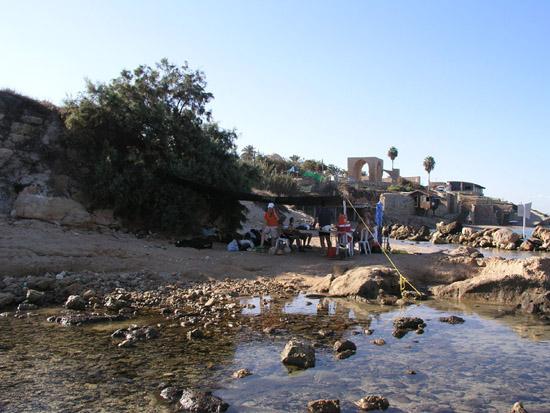
Archaeologists near Roman structure and pond
. Photo: Eran Nisenbaum and Assaf Yasur-Landau
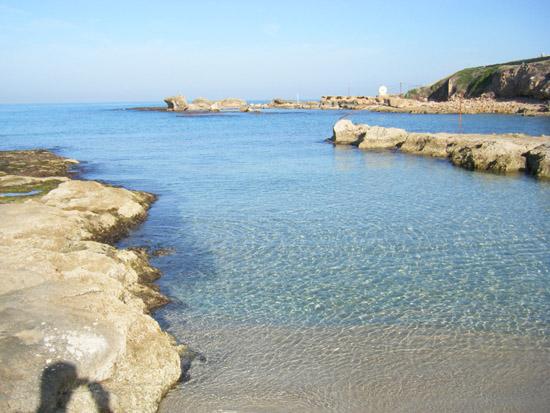
Man-made channel possibly connected with the pre-Roman port.
Photo: Eran Nisenbaum and Assaf Yasur-Landau
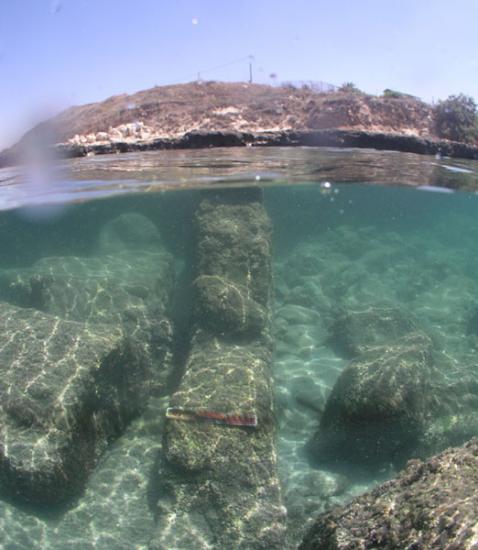
The pond and the Tel above and below the water.
Photo: Amir Yurman
Students and volunteers interested in participating in the excavations may obtain additional information at the project website at http://www2.fiu.edu/~daviesg/achziv/, or contact Dr. Gwyn Davies,
Florida International University, Department of History, DM 388A University Park
Miami, FL 33199
USA
daviesg@fiu.edu Phone: (305) 348-2974.
[1] http://www2.fiu.edu/~daviesg/achziv/